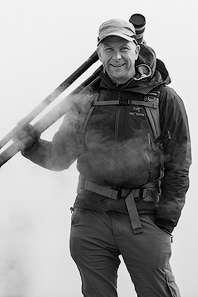
One of the most common challenges I see developing photographers struggling with is how to take photographs that actually express the creative, sensory and emotional experiences that motivated them to take the photo in the first place. We often take photographs that don’t adequately communicate our intentions or fail to express what we felt when the photo was created. How often are we deeply moved by a scene or an event and yet our photographs share very little of what made the experience special? A common refrain of the developing photographer is, “my photographs just don’t show it the way it was.”
This has been and always will be a fundamental artistic challenge in photography. One element that sets apart photography as art from photography as documentation is whether the photographer has the ability to to translate emotions, senses and perceptions of three dimensional space and time so that they resonate within a static, two dimensional image. Simply pointing a camera at a scene that, in person, feels significant is not enough in itself to communicate significance.
I recently listened to a conversation between two photographers in which it was agreed that art is a purely human endeavor and that nature itself doesn’t create art. In nature photography, art happens when the photographer recognizes and makes very personal choices about how to capture the important elements of a scene in an artistic way.
There are are many approaches to successfully capturing and expressing artistic vision in photography. I find that one of the main mental hurdles we wrestle with toward this end is the tendency to photograph everything literally, based only on what we see with our eyes instead of revealing the qualities that stirred us from within.
To see past my initial literal perspective I find it helpful to refrain from taking a photograph until I have probed a little deeper into my inner motivation. Let’s say I was drawn to take a photograph of a particular tree. Why that tree? What caused me to be drawn make a photograph of it instead of another tree? There must be a reason. When I look beyond the fact that it is a tree and uncover what it is that makes me want to photograph it I’m able to more clearly define what my photograph should really be about. Perhaps I like its gnarled character, or the quality of light setting it apart from its surroundings, or the motion of its leaves in the wind. Perhaps I am drawn to the vibrant fall color of its leaves, or the texture of the bark or the way it stands forlorn and alone in the fog.
Once I can identify the quality or qualities that compelled me to photograph it I have a focus. I am no longer creating a photograph of a tree. I am now attempting to communicate with the viewer my experience of light, or color, or motion, or the feeling of being alone in the fog. The fact that there is a tree in the photo becomes secondary to the qualities that give the photograph purpose and meaning. If I am impressed by the gnarled character of the tree’s branches this helps inform where I will need to place my camera to capture that quality. If dramatic lighting is drawing my attention then my photo needs to be about showcasing that light. This informs how I might best compose the scene in my view finder and how many bracketed exposures I might need to take. If it is leaf motion in the wind that captivates me my photo becomes about motion, which in turn informs my decisions on lens choice and shutter speed.
We are conditioned to see things literally and practically (I’m taking a photograph of rocks and a lake) instead of identifying their qualities and how they affect us on the inside (the smooth black shapes silhouetted against the backdrop of reflected twilight color feel both mysterious and strangely calming at the same time) and then creating a photo that communicates that experience. It takes practice to look beyond the literal object or scene in order to identify one’s own personal artistic connection to it. It is difficult to successfully photograph the essence of that connection, but this is precisely what we need to do if our photographs are ever to be more than just pictures of things.
If we limit our vision to the [literal] world we will forever be fighting on the minus side of things, working only to make our photographs equal to what we see out there, but no better.” – Galen RowellI’d love to have you join the discussion with a comment. What techniques help you determine how to approach a photograph? Do you also find it challenging to see past the literal? Is there something you do to help you tune into what your photograph is really about? I look forward to hearing your thoughts.
You are also invited to explore more of my photography at www.OutdoorExposurePhoto.com

Sean is an outdoor photographer, digital image developing enthusiast and photography educator based in Ashland, Oregon, where he resides with his wife and two sons. His previous career as a science teacher makes photography education a good fit. Sean teams up with fellow Photo Cascadia members leading workshops. He also teaches digital image developing classes, lectures and offers a series of Photoshop video tutorials.
More posts by Sean Visit Sean’s Image Gallery Visit Sean’s Website









Recent Comments